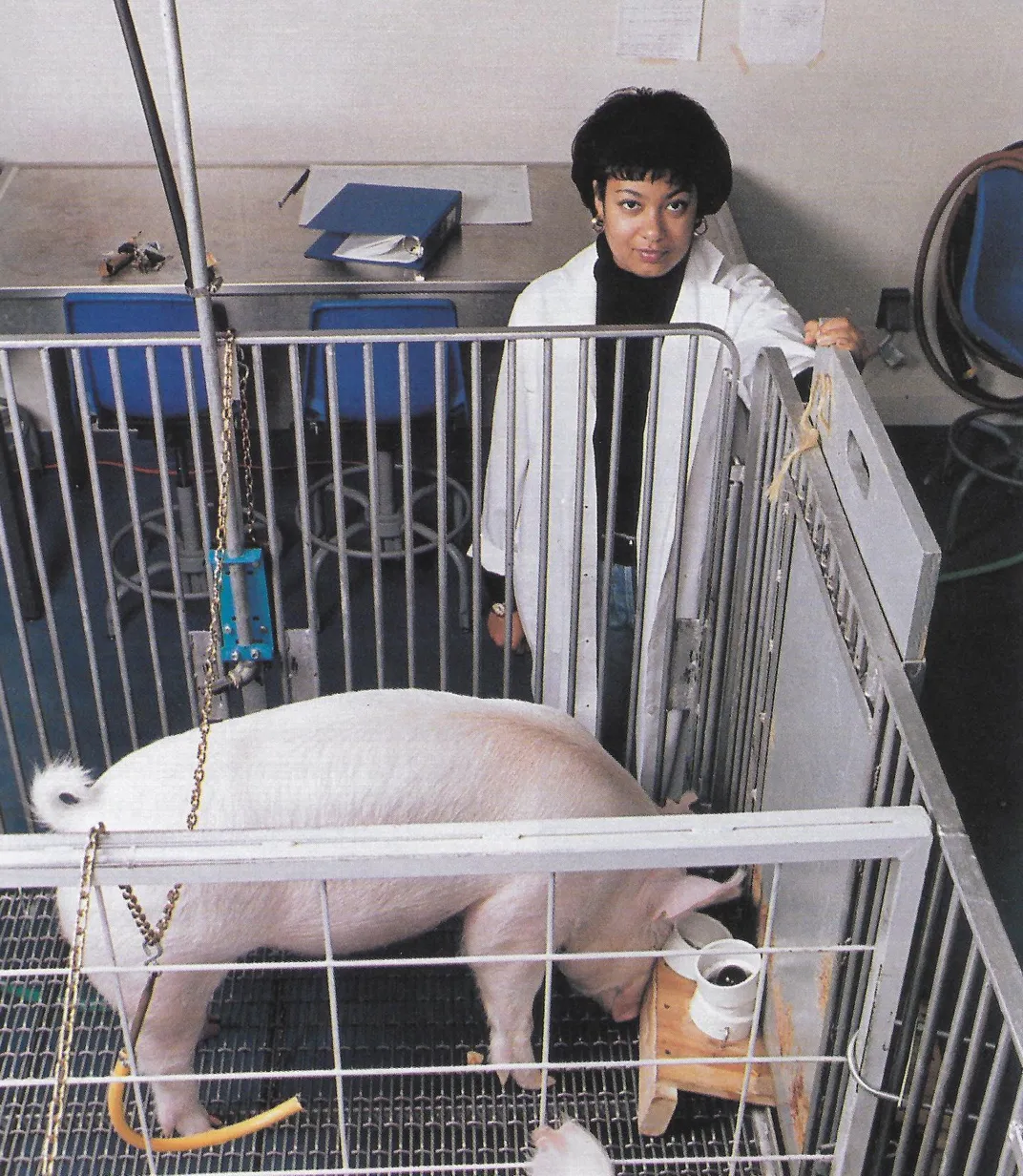Pigs Can Learn to Play Video Games When Tempted by Treats
The four swine in the study always wanted to be the first at the computer each day
/https://tf-cmsv2-smithsonianmag-media.s3.amazonaws.com/filer/8f/20/8f20f2c0-50dc-4f5c-9f35-ab374f5ff140/feb12_yorkshirepigvideogame.jpg)
There are three bright blue walls displayed on a black screen. Move the cursor to a wall, the computer goes bloop! and a treat pops out. After some success, one wall disappears. With only two walls, it’s a little bit harder. Then, after more bloops and treats, the screen drops down to one blue wall.
For a pig moving the joystick with its snout, it takes serious skills to get the cursor to that one blue wall.
But four pigs, named Omelet, Hamlet, Ivory and Ebony could do just that. A paper published on February 11 in the journal Frontiers in Psychology documents how the four pigs at Purdue University’s Center for Animal Welfare Science learned to play the simple video game. In many cases, the pigs performed significantly better than if they were moving the joystick at random. It is the first peer-reviewed paper to come out of pig-gamer research that has been running since the 1990s, Isaac Schultz reports for Gizmodo, and it is one of many examples of pigs’ formidable intelligence.
“What they were able to do is perform well above chance at hitting these targets,” says the study’s lead author Candace Croney, director of Purdue’s Center for Animal Welfare Science, to Gizmodo. “And well enough above chance that it’s very clear they had some conceptual understanding of what they were being asked to do.”
The researchers presented the pigs with an arcade game-like setup that was originally designed for non-human primates like rhesus monkeys that could operate it with their hands. Pigs, however, had to operate the game by pushing the joystick with their snouts, which required looking up and down during the game, Nicola Davis writes for the Guardian. The pigs were also farsighted, so the scientists had to adjust the screen placement so they could see it.
But with treat-based training, and equally important encouragement from their trainers, the pigs were eager to get their screen time each day.

People already knew that pigs can learn commands like “sit” and “come” that are usually associated with dogs. “But the ability to use a joystick to navigate a cursor on a screen is certainly something that has not been on the list of any farm animal so far," says animal cognition expert Christian Nawroth, who studies goats at the Leibniz Institute for Farm Animal Biology and was not involved in the study, to CNN’s Sara Spary and Ada Wood.
He adds that the video game, which required the pigs to connect the movement of the joystick to the cursor on a screen, was "not an easy one to solve."
The study focuses on the last 50 rounds of the video game played by each pig on each of the three levels, with one, two and three walls, reports the Guardian. The round was successful if the pig moved the cursor to the bright blue target with the first cursor movement.
Hamlet and Omelet, a pair of young Yorkshire pigs, performed better than random chance when the screen showed one or two bright blue walls. But after 12 weeks of the study, the pair outgrew the test pen and couldn’t stand long enough to complete the game.
The other two pigs, Ivory and Ebony, are two-year-old Panepinto micro pigs. They participated in the study for 15 months. Ivory performed above chance no matter how many walls appeared on the screen, and even hit the one-wall targets 76 percent of the time. Ebony performed above chance for the one-walled and three-walled scenarios.
“They clearly understood the connection between their own behavior, the joystick, and what was happening on the screen,” writes neuroscientist Lori Marino, who directs the Whale Sanctuary Project, to Gizmodo in an email. “What makes these findings even more important is that the pigs in this study displayed self-agency, which is the ability to recognize that one’s’ own actions make a difference.”
Croney tells CNN that she hopes the results will help people recognize how mentally sophisticated pigs are. For more than a decade, scientists have shown that pigs are fast learners, can use mirrors and have strong memories.
"We still underestimate the smarts of pigs and farm animals in general,” says Nawroth to CNN. “As this avenue of research, farm animal cognition, is taking off steam, we will likely see more research on more sophisticated learning and cognitive skills of farm animals over the next years.”